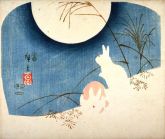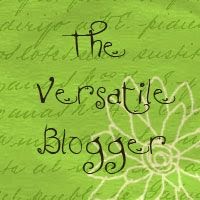A ” jam session ” by Michaela and Angelika
A: Since I have started listening to Eckhart Tolle´s teachings in 2008, I have gone on and off into periods of intensive pain and suffering. Lately emotional pain has replaced the physical pain.
M: Physical pain very often is an expression of blocked energy. It can be maddening, because one can really suffer a lot, but no physical causes can be found. Very often the diagnosis is “psychosomatic,” which is correct, but for many sufferers has the undertone of “faking it,” or “its not serious.”
A: Eckhart suggests that we surrender to what is. So I followed this practice as well as I could from the time I began listening to his work.
Four weeks ago, by chance I happened to meet a friend, who was very keen on telling me about John Welwood´s work. My immediate “ego” response was a sense of resistance to my friend´s offering. However, I went ahead and ordered a set of CDs of a John Welwood seminar.
Three weeks ago I entered a seven day period of almost unbearable despair, emotional pain and desolation. These feelings came up within me almost randomly. All I could do was allow them to be. I did my best not to add a story to the upcoming sensations and emotions. My resistance towards what was happening was very exhausting.
At the time I received the Welwood CD set. On the set, he was explaining the causes of our psychological difficulties, which are, like a never ending wheel of karma, repeatedly calling up pain and suffering.
However, he also points to the way out of this condition. Welwood explains that feeling connected to Life allows a free circulation of energy. Then we feel open, and experience Stillness, Peace, and Genuine Goodness. A loss of this connected feeling causes pain, grief, sorrow and anger.
M: It leads to resistance, because the strong emotions can be perceived as unbearable.
A: This unconnected condition usually leads to acting out our defenses (e.g., attack or withdrawal), as we try to compensate for the pain. Old grievance is also a part of our compensation as well as a cause for it. It obscures the feeling of anger. Anger conceals the grief of the loss of connection, of the loss of a sense of who we really are, of the loss of “self love.”
Usually our strategy is to blame “the others” for this. M: ”The others” may also be a disease or chronic symptoms of pain and suffering. It is much easier to blame a “disease” than looking for the causes within oneself. A: Although at other times we may as well expect “the others” to be able to heal our loss.
This almost never works and it engages us in an ongoing circle of actions and reactions. M: This is also true for being frustrated with medicine or the physician, who can become “the other.”
A: What works is the antidote for the loss of connection:
Learning to hold our own sense of “un-love,” and learning to relate from within ourselves to pain, body sensations, and resistance brings us to the actual healing itself. M: This is what is called allowing and acceptance, or “loving what is.” Of course I can only allow, what I know to be there…
A: We need to find the “place of un-love” within us, although it is usually the last place we want to experience. This part of us is like a haunted house and we have abandoned it. Coming back to this place, experiencing it directly, opening it up again, letting light and warmth in, will bring healing and connection to Life itself. We need to learn now to hold this place within us. M: It feels like relaxing, actually.
A: That is basically what we had always wanted from our parents.
We wanted and needed them to show us how to deal with arising sensations and emotions in our body. We wanted them to tell us, “I see what you feel, and it is alright.”
M: It may not always be a totally straightforward process to find this place. It may be buried under resistance, denial or patterns of avoidance. It is important to unfurl the entangled energies and go to the bottom of them. There may be layers of different feelings and emotions to uncover.
A: Since we are not children any longer, it is appropriate to go to this place alone, make contact with it, acknowledge what is there, and how it feels in our body (as opposed to in our mind). We may experience a feeling in our stomach, an agitation in the belly, a tightness in the chest or throat, or a general heaviness in our body. With this experience we open our heart to the feeling, and develop a kind understanding towards our self. We then let go of any barrier between us and the feeling. We now stay in alert presence with it.
We allow it to be just as it is, and this allows us to relax.
We deliberately relinquish any attempts to fix, judge or change sensations or emotions. Welwood calls this “body sensing,” meaning “the acknowledging of inner feeling and not the story or mental construction around it.” Gurdjieff called this “conscious suffering,” willingly making use of the pain that arises when encountering inner feelings (obstacles), as a motivation to work on overcoming them. M: Conscious suffering is actually a contradiction of terms. Once we are conscious of the sensation of the pain and experience, and allow it for what it is, we no longer “suffer.” We only suffer when we build resistance towards something. Once we accept and allow, we drop the resistance, which is called letting go. Another word for it would be to “open up.”
A: Knowing this, we can, especially in any relationship, convert tribulations, misunderstandings, misinterpretations into chances for healing and instead of closing up, get reconnected to Life itself again.
















Great dialog. Thank you both for sharing–I enjoy stopping by.
Lately I have been experiencing a lot of fatigue in the face of demanding physical work. I know that the fatigue is not just physical, however, there is a lot of emotion behind it… IN it. Diving deep into exhaustion has been challenging and painful, but I’m starting to see, and feel, light at the end of the tunnel.
Lovely dialogue, ladies. Angelica, as I was reading some of your words about pain and suffering, it made me think of the cd I just received….Yin Yoga by Kim Eng. Last night I finally listened to the introduction (after practicing the yoga a couple of times). After Kim speaks, Eckhart offers his insights. His words were very interesting and helpful. He speaks of the physical discomfort while practicing and holding the poses for a longer time than expected. He gives ways on how to experience this pain with awareness. He also talks about the differences between experiencing pain with presence and with will-power (mind). What was exciting to me (as I have only experienced the yoga poses with will-power to this point) was this wonderful opportunity I have to learn to be the space for pain/suffering within my body and mind. This is new for me. And it seems that this type of ‘practice’ will help me in a valuable way to bring this awareness into my daily life with external situations.
Many blessings to you and Michaela for bringing us this wonderful website. xoxo
Thanks Geli and Marille, great exchange!